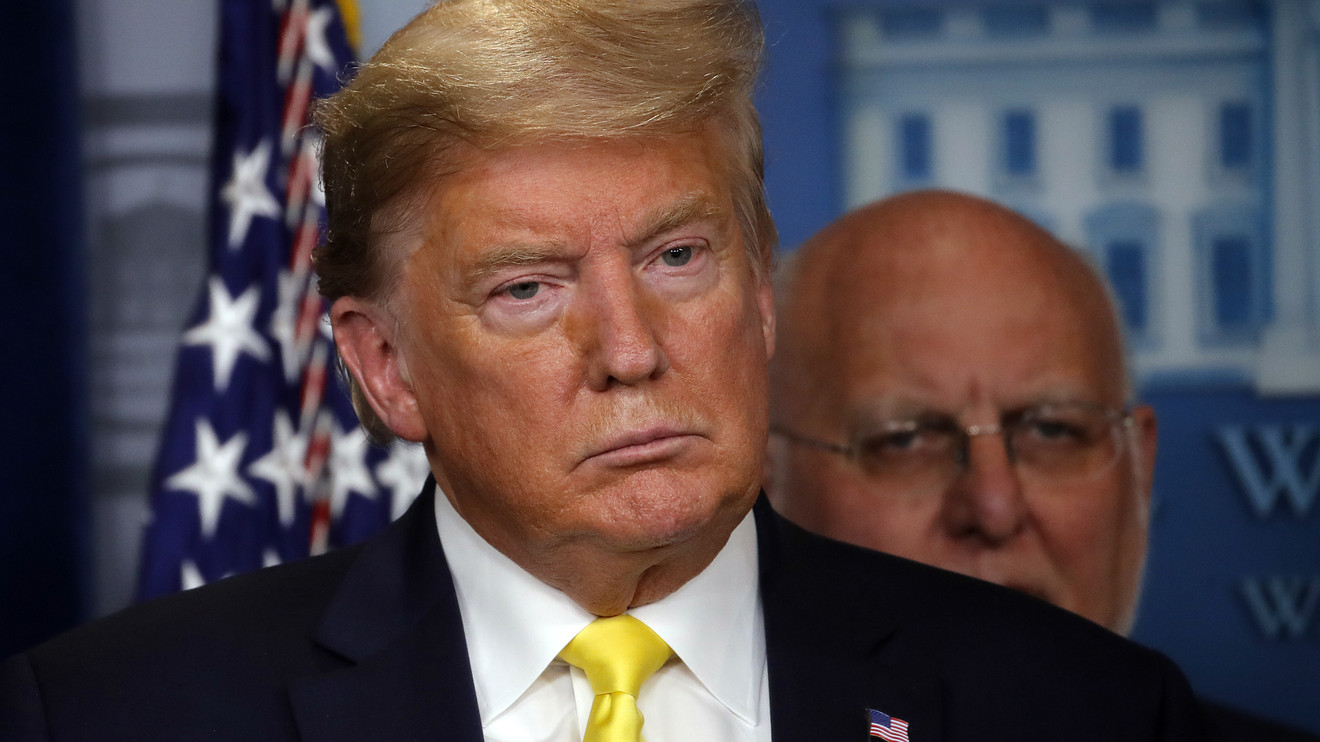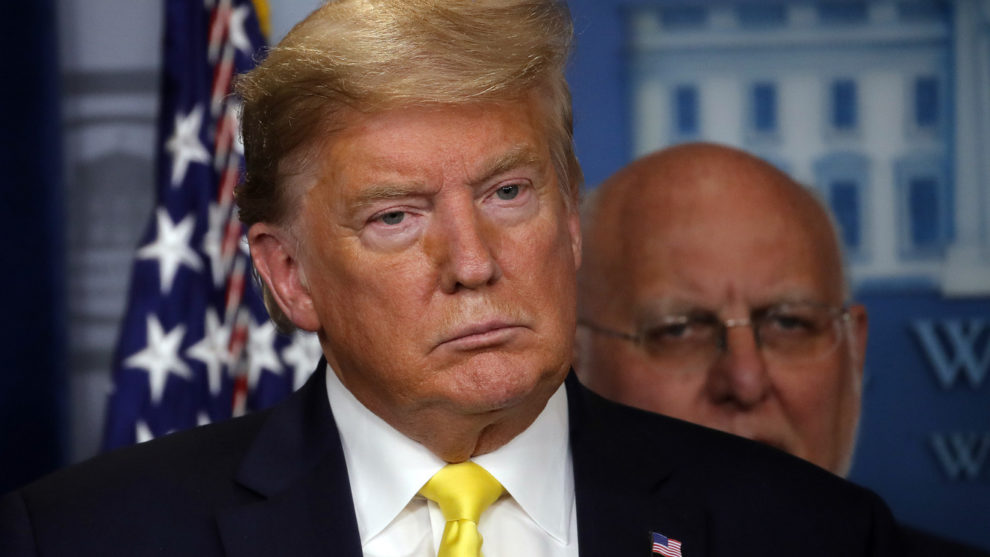
U.S. stocks closed sharply higher Tuesday after a volatile session that restored about half of the losses seen Monday when stocks saw the biggest one day fall since the 2008 financial crisis.
Tuesday’s rebound was partly fuelled by a White House push to persuade Congress to agree to a fiscal stimulus package that may include a payroll tax cut to mitigate the economic impact of the COVID-19 epidemic.
What did the major indexes do?
The Dow Jones Industrial Average DJIA, +4.89% closed 1,167.14 points, or 4.9%, higher, at 25,105.14, while the S&P 500 SPX, +4.94% rose135.67 points or 4.9% to close at 2,882.23. The Nasdaq Composite Index COMP, +4.95% was up 393.58 points, or 5%, at 8,344.25.
The Tuesday rebound was not unusual — Bespoke Investment Group strategists found that in the 10 previous times since 1952 that the S&P 500 fell 5% or more on a Monday, the index has gained the following day, by an average of 4.2%.
The Dow on Monday plunged 2,013.76 points, or 7.8%, to 23,851.02, while the S&P 500 fell 225.81 points, or 7.6%, to end at 2,746.56, near its session low. The Nasdaq Composite Index plunged 624.94 points, or 7.3%, to finish at 7,950.68. All three benchmarks suffered their biggest one-day percentage declines since 2008.
What drove the market?
Stock-index futures found support Tuesday after President Donald Trump advocated for payroll tax relief and other measuresto help businesses deal with the economic slowdown resulting from the coronavirus epidemic. Lawmakers in both parties though expressed skepticism about a payroll-tax cut to bolster the economy.
Monday’s stock plunge was the result of fears that government attempts to contain the epidemic may also shut down economic activity globally. At the same time, the biggest one day fall in crude oil prices since the 1991 Gulf War, after Saudi Arabia and Russia began a price war last Friday, also raised fears of a credit crisis in the energy industry.
See:Why an ‘oil shock’ sent the Dow down 2,000 points and upended global financial markets
“My personal view is that there’s still some more downside to come, largely due to the fact that we don’t have good data on the extent of the virus in the US,” said Donald Calcagni, chief investment officer with Mercer Advisors, in an interview.
Equities markets may perk up on discussion of tax cuts, Calcagni said, “but I don’t think that’s a long-term solution. Eventually we’ll have to take it back. I think what the market really needs to see is better leadership out of the White House in terms of dealing with the virus.”
Markets are now pricing in an easing of monetary policy from the European Central Bank at its Thursday meeting this week and from Federal Reserve at next week’s policy meeting.
“The big question now is: Will a potential bear market in stocks usher in a recession?”, said LPL Financial Senior Market Strategist Ryan Detrick. “After all, stocks tend to lead the economy both into and out of recessions. Now the good news is not all bear markets occur in recessions; in fact, when the economy has avoided recession, stocks have bottomed right around down 20% over the past several bear markets.”
In corporate news, airlines, including American Airlines Group Inc. AAL, +15.25% , Delta Air Lines Inc. DAL, +4.48% and Southwest Airlines Co. LUV, +4.44% announced capacity reductions and other measures in response to the coronavirus outbreak.
Airline shares took off: American Airlines shares closed about 15% higher, while Delta shares jumped 4.5%, and Southwest shares were up more than 4%.
See: Airlines move to cut capacity and rein in costs as coronavirus effect intensifies
What did other markets do?
After plummeting 25% Monday, their worst day since the 1991 Gulf War, crude oil prices rebounded. West Texas Intermediate crude for April delivery CLJ20, +10.66% rose 10.4% to settle at $34.36 a barrel on the New York Mercantile Exchange, while May Brent crude BRNK20, +1.31%, the global benchmark, gained 7.7%, to $37.22 a barrel.
Treasury prices also retreated lifting yields, as haven flows abated. Yields which move in the opposite direction of price, dropped sharply on Monday, sending the 10-year note TMUBMUSD10Y, 0.803% and 30-year bond TMUBMUSD30Y, 1.280% rates to all-time lows. The 10-year yield popped 30 basis points to 0.80%, while the 30-year yield was 29 basis points higher to 1.31%.
Gold futures GCJ20, -1.64% slid 1.5% to $1,650.20 an ounce.
The dollar DXY, +1.73% was 1.7% higher against a basket of currency trading partners.
In Asia overnight, the Nikkei NIK, +0.85% rose 0.85%, the China CSI 300 000300, +2.14% popped 2.1%, and the Hang Seng HSI, +1.40% was up 1.4%.
In Europe, the STOXX 600 SXXP, -1.13% closed more than 1.1% lower. Italy’s FTSE MIK Index I945, -3.27% tumbled nearly 3%.
Which stocks were in focus?
Global Payments Inc. GPN, +10.33% shares jumped Tuesday afternoon after the CEO affirmed earlier forecasts, saying the company has seen “no discernible impact” on operations so far.
Shares of Occidental Petroleum Corp. OXY, +14.62% roared nearly 15% higher after the energy company said it would slash its dividend.
Stitch Fix Inc. SFIX, -25.22% shares tumbled nearly 27% after reporting results that missed analyst expectations.
Shares of Thor Industries Inc. THO, +11.09% jumped 10% even after a hefty stock price target cut, to $75 from $95, by KeyBanc Capital analysts. In Tuesday trading, it was at about $57.
A handful of cruise operators saw shares gain after President Trump pledged aid, including Carnival Corporation CCL, +10.48%, which rose 8%, and Royal Caribbean Cruises Ltd. RCL, +7.04% , which jumped 7%.
See:Here’s how investors say policymakers could help businesses survive a coronavirus cash crunch











Add Comment